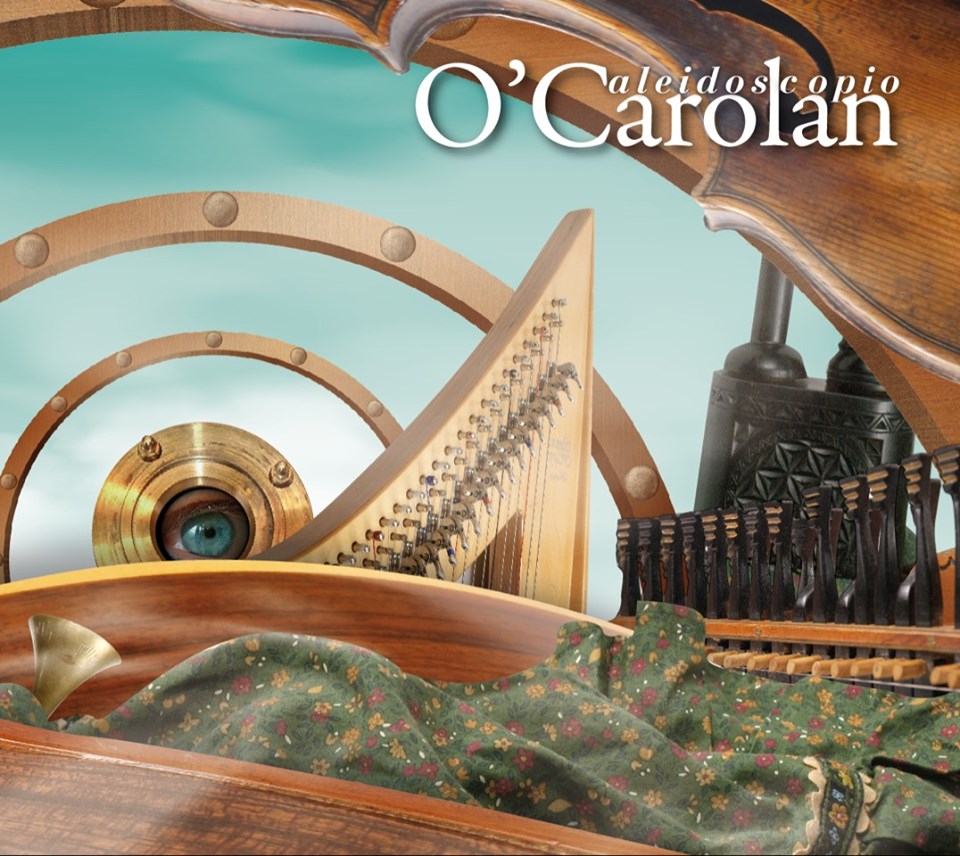The Aragonese group O’Carolan brings us closer than ever to the popular music of their land from an apparently “distant” perspective.
Andres Turón. September 20, 2021.
This proposal offered by O’Carolan on his fifth album is called Caleidoscopio (Kaleidoscope), an album whose delicacy in dealing with Aragonese folklore is as particular as it is unmatched.
The group takes its name from Turlough O’Carolan, one of the most important Irish authors who lived from the end of the 17th century to the middle of the 18th. A large number of his traditional compositions for Irish harp are still performed today.
There are four previous publications: Alrededor de una vela (Around a Candle, 1999), La llave de los sueños (The Key to Dreams, 2000), El reloj secreto (The Secret Clock, 2007) and Nota de Paso (Passage Note, 2010). On this occasion we are talking about Caleidoscopio (2020), an elaborate repertoire made up of 12 self-composed songs, all of them based on traditional melodies from different areas of Aragon.
Using this “musical kaleidoscope” as a vehicle, we can travel to Aragonese towns such as Quinto de Ebro, Sariñena, Jorcas, Alquézar or Benabarre, among many others, but with a very peculiar color provided by the performers with both Aragonese and Gaelic instruments (typical of Celtic folk music). Miguel Ángel Fraile is in charge of the accordion and the wind instruments, including the whistles or the uilleann pipe (typical of Irish music) and the boto bagpipe and the psaltery (Aragón); Pilar Gonzalvo appears in charge of the Irish harp and the hurdy-gurdy; Susana Arregui with the violin and the nyckelharpa; Ernesto Cossío on guitar; and, finally, Julián Ansuátegui with percussion, where the bodrhan, of Irish origin, appears.
Since his last publication in 2010, we could already intuit a little his next move, as O’Carolan has increasingly focused on these popular melodies from Aragon, perfecting the strange balance they have achieved between this repertoire and the style Irish to which his instruments transport us. His concept of “Passage Note”, which gives the album its name, was the transition to Caleidoscopio, because after his first three albums, he included music of Aragonese origin (without leaving behind the Irish air) until he plunged fully into Aragonese folklore already on his latest album.
Also noteworthy is the participation of the Concuerda Quartet in three of the album’s titles: Compás 26, La Sirena de Piedra and El Abrigo del Agua, with Noelia Gracia on violin, Cecilia Grilló on viola, Jorge Marco on cello and Antonio Uriel on double bass.
Without a doubt, I would recommend this group and, more specifically, their album Caleidoscopio, to any fan of Aragón music, as it is a very curious alternative to any style with which we can compare it. The musicians are of an exceptional level and use unusual instruments that will leave us speechless (even more so if you have the opportunity to enjoy them live). O’Carolan is perhaps the closest experience to listening to traditional Aragonese music while enjoying a pint of Guinness beer in a pub with live music. This is a truly unique group.
